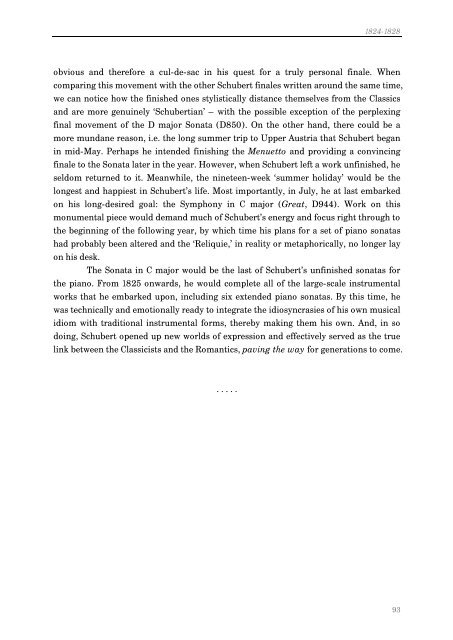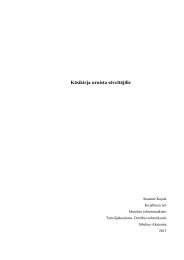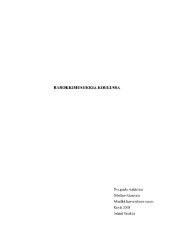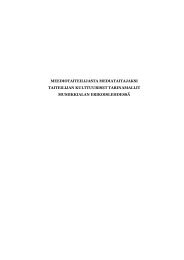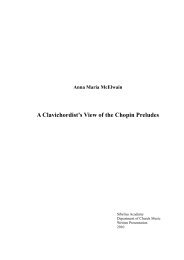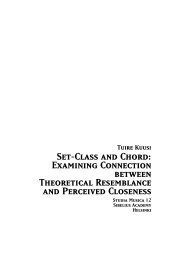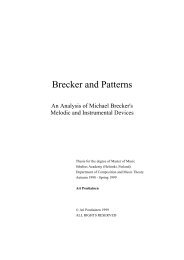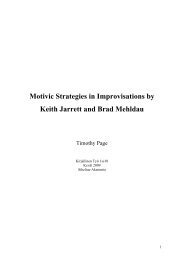The Unfinished Piano Sonatas of Franz Schubert Javier ... - Ethesis
The Unfinished Piano Sonatas of Franz Schubert Javier ... - Ethesis
The Unfinished Piano Sonatas of Franz Schubert Javier ... - Ethesis
You also want an ePaper? Increase the reach of your titles
YUMPU automatically turns print PDFs into web optimized ePapers that Google loves.
1824-1828<br />
obvious and therefore a cul-de-sac in his quest for a truly personal finale. When<br />
comparing this movement with the other <strong>Schubert</strong> finales written around the same time,<br />
we can notice how the finished ones stylistically distance themselves from the Classics<br />
and are more genuinely ‘<strong>Schubert</strong>ian’ – with the possible exception <strong>of</strong> the perplexing<br />
final movement <strong>of</strong> the D major Sonata (D850). On the other hand, there could be a<br />
more mundane reason, i.e. the long summer trip to Upper Austria that <strong>Schubert</strong> began<br />
in mid-May. Perhaps he intended finishing the Menuetto and providing a convincing<br />
finale to the Sonata later in the year. However, when <strong>Schubert</strong> left a work unfinished, he<br />
seldom returned to it. Meanwhile, the nineteen-week ‘summer holiday’ would be the<br />
longest and happiest in <strong>Schubert</strong>’s life. Most importantly, in July, he at last embarked<br />
on his long-desired goal: the Symphony in C major (Great, D944). Work on this<br />
monumental piece would demand much <strong>of</strong> <strong>Schubert</strong>’s energy and focus right through to<br />
the beginning <strong>of</strong> the following year, by which time his plans for a set <strong>of</strong> piano sonatas<br />
had probably been altered and the ‘Reliquie,’ in reality or metaphorically, no longer lay<br />
on his desk.<br />
<strong>The</strong> Sonata in C major would be the last <strong>of</strong> <strong>Schubert</strong>’s unfinished sonatas for<br />
the piano. From 1825 onwards, he would complete all <strong>of</strong> the large-scale instrumental<br />
works that he embarked upon, including six extended piano sonatas. By this time, he<br />
was technically and emotionally ready to integrate the idiosyncrasies <strong>of</strong> his own musical<br />
idiom with traditional instrumental forms, thereby making them his own. And, in so<br />
doing, <strong>Schubert</strong> opened up new worlds <strong>of</strong> expression and effectively served as the true<br />
link between the Classicists and the Romantics, paving the way for generations to come.<br />
. . . . .<br />
93


